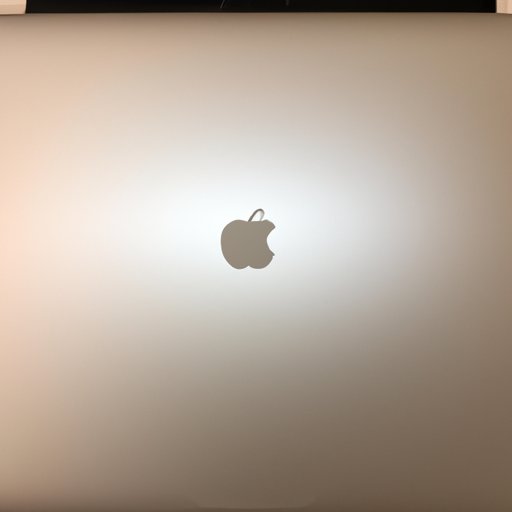
Introduction
Factory resetting your MacBook can be critical, especially if you’re planning to sell, donate, or hand it over to another user. This process will erase all data and restore the device to its original factory settings. It’s essential to ensure that it’s done correctly to avoid any data mishaps. In this article, we’ll provide a step-by-step guide that will help you reset your MacBook safely.
Step-by-Step Guide
Before you begin to reset your MacBook, it’s crucial to back up your data. This will help you keep all your files safe and restore them once the resetting is complete. To do this; navigate to the Time Machine Menu, then click “Back Up Now.”
Once you back up your data, you should log out of iCloud. This will help you avoid any issues that may arise when logging in after resetting the device. To log out of iCloud, go to System Preferences > iCloud, then click “Sign Out.”
To erase your MacBook and restore it to factory settings, you need to reboot your device to Recovery Mode. Hold down Command + R while rebooting your MacBook until the Apple logo appears, then follow the on-screen instructions. Once done, click “Disk Utility” from the main menu and select your hard drive. Go ahead and select “Erase,” then follow the on-screen prompts. This process will erase all data completely and restore your MacBook to its original settings.
After erasing your MacBook, you can reinstall MacOS from the Recovery Mode by selecting “Reinstall a New Copy of MacOS.”
Following these steps will ensure that you factory reset your MacBook with ease.
Using Videos
Video tutorials are another effective resource for factory resetting MacBooks. These guides provide visuals and step-by-step instructions that enhance the user experience. While the text guide provides a detailed solution, a video guide may help clarify certain aspects. Here’s a great video tutorial that demonstrates the process of factory resetting a MacBook:
Best Practices
It’s important to follow best practices before and after resetting your MacBook to ensure that you don’t lose any essential data. One of the best practices is backing up your data, which was discussed earlier. Creating a bootable USB drive is also vital since it provides you with a backup option. If your MacBook isn’t responding after resetting, you can use the backup drive to restore the files. Understanding the risks of data loss is also essential before resetting your MacBook. However, by following the best practices outlined in this article, you can ensure that you don’t lose any important data.
Frequently Asked Questions
Here are some common questions related to factory resetting MacBooks:
Q. What is the difference between a hard reset and a factory reset?
A. A hard reset typically involves holding down specific keys to restart the MacBook. On the other hand, a factory reset erases all data and restores the device to its original factory settings.
Q. What is the impact of factory resetting my MacBook on my data?
A. Factory resetting your MacBook erases all data permanently. Therefore, it’s important to back up any essential files before restoring the device.
Q. Can I undo a factory reset if it was done unintentionally?
A. Unfortunately, it’s impossible to undo a factory reset once it’s completed. It’s essential to back up your data before getting started.
Troubleshooting for Common Problems
Here are some common problems that MacBook users may encounter when factory resetting their devices:
Q. My MacBook won’t turn on after resetting?
A. If your MacBook isn’t turning on after resetting, try resetting the System Management Controller (SMC). Hold down the Shift + Control + Option keys and the power button simultaneously. Release all keys and press the power button to turn on the device.
Q. I’m experiencing slow performance after resetting my MacBook?
A. In some cases, slow performance may arise after factory resetting your MacBook. Ensure that all your software is up to date, remove any unused applications, and clear system caches to improve performance.
Q. I’m experiencing some memory issues after resetting my MacBook?
A. If you’re experiencing memory issues, uninstalling any unnecessary applications and clearing your cache could help free up some space. Alternatively, you can upgrade your device’s memory capacity to improve performance.
Conclusion
Knowing how to factory reset your MacBook can be significantly helpful, especially if you’re planning to sell or donate your device. Ensuring that this process is completed correctly is essential to avoid any data loss. Following the steps outlined in this article should help you factory reset your MacBook safely. Remember to follow the best practices outlined above and seek support if you encounter any problems.





